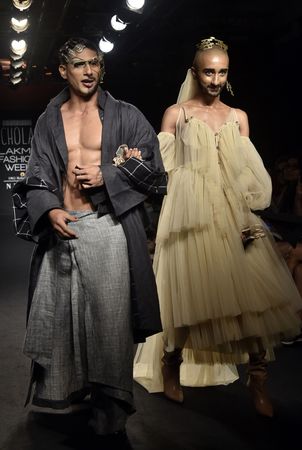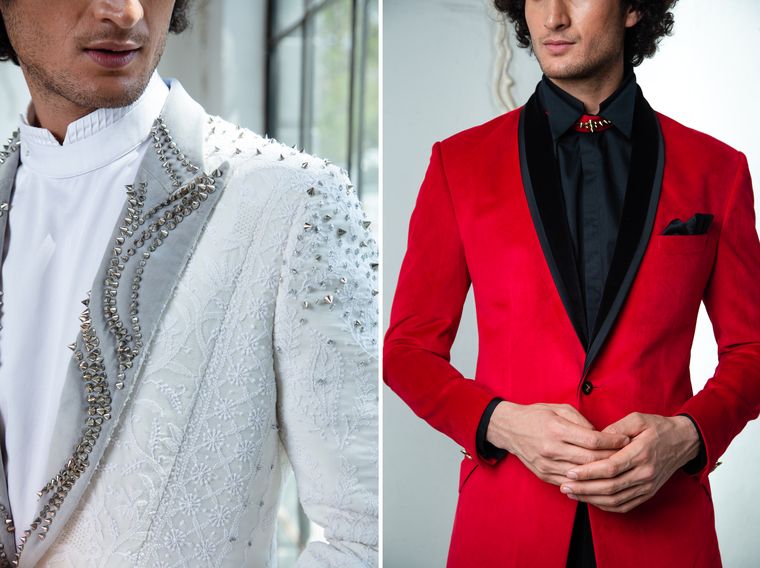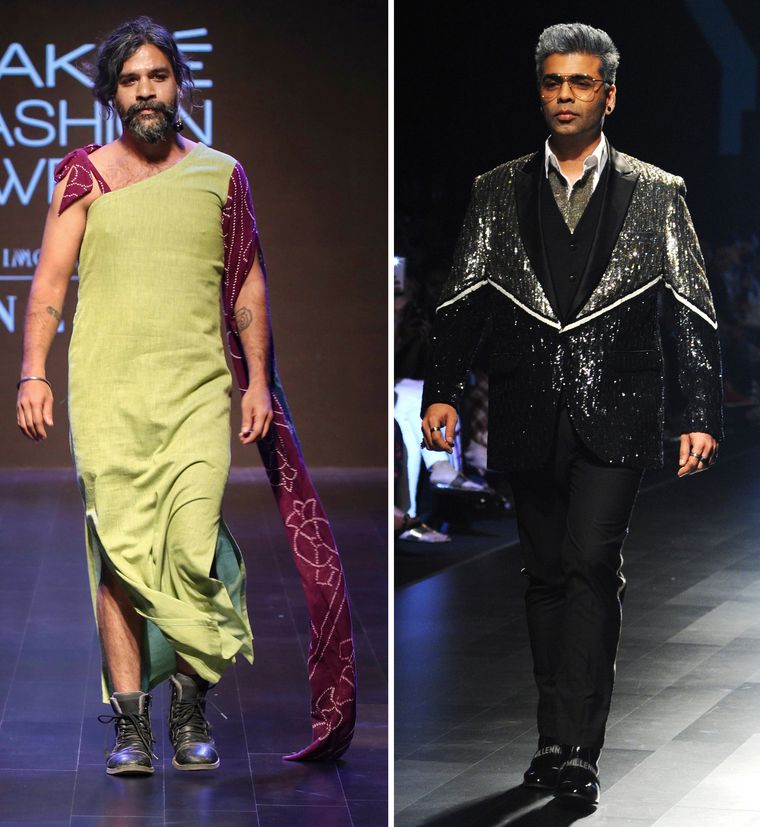In 1957, designer John Stephen opened a shop in London’s Carnaby Street selling cheap, colourful suits. It triggered the Peacock Revolution of the 1960s and early 1970s. Suddenly, men’s fashion became flamboyant and far less constrictive. Men grew their hair long and embraced radical couture a la chiffon shirts, brocade jackets and crop tops. Mick Jagger wore dresses on stage and David Bowie appeared on a magazine cover in a brilliant, form-fitting suit with exaggerated shoulders. “The Beatles charged, first through Europe and then this country, and the gleeful young followed them into Prince Valiant hairdos, suits buttoned to the chin, and flamboyant haberdashery,” stated a fashion writer in a 1969 article.
The 1970s witnessed a U-turn. When the Vietnam War ended, the hippie movement dissipated and men’s fashion returned to its conservative roots. “Successful dress is snobbish, conservative, bland and conformist,” wrote John T. Molloy in his 1975 style guide Dress for Success. In India, too, the reverberations were felt. “Men had always dressed flamboyantly in India,” says fashion designer Gaurav Gupta. “Just look at the colourful textiles and jewellery worn by the maharajas. But somewhere along the way, American culture started taking over, with its monotonous and corporate fashion.”
However, today, some might say we are in the midst of Peacock 2.0. Gender binaries are disappearing and fashion has become extremely fluid. According to Gupta, this is because it is currently less influenced by the economy than by culture. He calls it the “creative cultural economy”. Pop culture abounds with examples of gender fluidity, with Oscar-winning films like The Danish Girl, A Fantastic Woman and Dallas Buyers Club featuring men playing transwomen (Daniela Vega of A Fantastic Woman is trans.) For the exhibition ‘Gender Bending Fashion’, which is currently on at the Museum of Fine Arts in Boston, the curator got a range of gender-neutral mannequins in shades of grey to display the clothes. The exhibition is on till August 25.
In India, the Lakme Fashion Week Winter/Festive 2018 had a show called Gender Bender in which labels like Anaam, The Pot Plant, Bobo Calcutta and Bloni presented their gender neutral collections. Resham Karmchandani and Sanya Suri of The Pot Plant called their couture “100 per cent human”. “Clothes are supposed to be easy to transform and have a spirit of fluidity,” Akshat Bansal, founder of Bloni, had said. “That is why my clothes are in black and white so they can be neutral in any setting.” Fast fashion brands like Selfridges and Zara are among the many that have come out with gender neutral lines called Agender and Ungendered.
Gender fluidity among men is nothing new in India. In Cocktail, Saif Ali Khan danced in red lipstick and lingerie that left little to the imagination, Aamir Khan played an attractive bar dancer in Baazi and Naseeruddin Shah wore a swimsuit in Tahalka. Art curator Himanshu Verma has been wearing a sari for years now. Ranveer Singh has been seen in a skirt on several occasions. But only recently has this counter-culture trend gone mainstream. As Gupta says: “Being different is no longer funny. It is cool.”
Men’s formal wear—suits, tuxedos and sherwanis—is perhaps the last bastion that has been conquered. Recently, Goldman Sachs relaxed their strict dress code. Men can replace suits with chinos, as long as they ‘exercise good judgment’. At this year’s Oscars, actor Chadwick Boseman wore a Givenchy outfit that had very little resemblance to a tuxedo. Actor Billy Porter wore a tuxedo gown by Christian Siriano.
According to fashion designer Kunal Rawal, India is at its most exciting phase when it comes to menswear. “When I started my label [in 2006], men were never involved with Indian wear,” he says. “Their mothers, sisters or fiancees would choose it for them. Today, we are living in a far more global environment. It is not about how crazy you can be, but how much fun you can have with your clothes and how you can enjoy your personality. Fashion is becoming more functional. Sherwanis are not as boxy or stiff. There is more panelling for comfort and mobility. The aesthetic is more modern, easier and fluid. Even wedding wear is more customised and personalised. There are no generic weddings anymore.”
Designer Wendell Rodricks agrees. “India is taking its own spin on the Nehru jacket and sherwani,” he says. “When I see Sabyasachi sending out floral jackets a la Indienne, it thrills me. When I see Ranveer Singh wearing India with aplomb and daring, I applaud his style sense. We have more to offer the world as far as jackets are concerned as we have always kept them in a flexible space.”
But today, it is not just a Ranveer Singh or a Karan Johar who is fashion’s favourite rebel. Rajkummar Rao is noted for his bold and unusual pairings—suits with sneakers or bomber jackets with harem pants. Ayushmann Khurrana makes a sassy statement with his brightly-coloured suits and draped silhouettes. Vicky Kaushal is a doyen of florals. Prateik Babbar can carry off fluid fashion with panache. It looks like this is a trend that is here to stay. Before long, Raymond might have to rethink the look of their ‘complete man’. Silver cufflinks and leather shoes might no longer make the cut.





